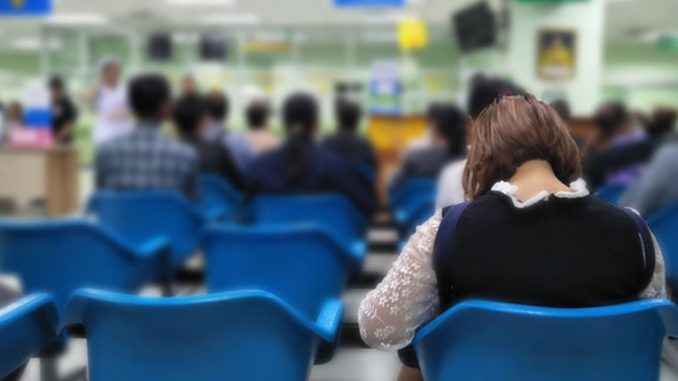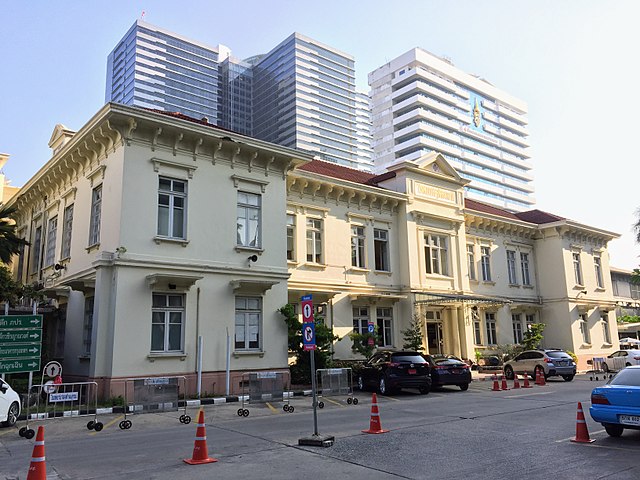
Immediately after the ex-PM Thaksin Shinawatra’s Thai Rak Thai party won the election by a landslide, Thailand’s universal health coverage – the country’s largest ever health reform – was implemented in 2001. Although this program earns very high popularity among voters, attempts to reverse the national health schemes back to the pre-Thaksin one has been observed. Those attempts seemed to be incredible during under majority voting regime, however, they have become more plausible since the military government seized the power in 2014. This article will explain how the universal health coverage is at risk of being overturned under dictatorship, in which the elites from the supply side of the healthcare market captures the political power. Using the medical council’s coinsurance raise proposal as a case study, I will give an evidence-based response to the proposed plan.
Thailand’s universal health coverage is usually called “the 30 Baht program” since its enrollees pay a 30 Thai Baht (approximately one US dollar) copay per visit instead of paying out of pocket. The 30 Baht program offers a large coverage, including office visit, inpatient admission (including C-sections) and medication (including antiretroviral drugs).
The 30 Baht program benefits its enrollees through multiple channels. First, it reduces the risk of catastrophic out-of-pocket medical expenditure. Limwattananon et al (2015) find that because of the fixed copay of 30 Baht household medical expenditure risk was reduced by three-fifths. As for the health outcome, due to better access to healthcare especially for the poor, the 30 Baht program decreases infant mortality by 13% – 30% (Gruber, Hendren and Townsend, 2014).
The 30 Baht program is heavily subsidized by the Thai government. Immediately after the initiation of the 30 Baht program, public hospitals received an approximately four-fold increase in funding. One US dollar is approximately 35 Bahts
In 2002 and 2018, the government of Thailand spent 4.7% and 5.9% of its total expenditure on the 30 Baht program, respectively. Although the size of the 30 Baht program budget is even smaller than that on defense, it is still often blamed as a government budget burden by conservative medical doctors.
The 30 Baht program has been the center of political economy of Thailand’s public health policy determination. Under the universal health coverage scheme, the government is the single payer in the healthcare market. As a result, the supply side of the market, including the Medical Council, private hospitals, and pharmaceutical firms, loses its negotiation power to the demand side, in which the collective action is centralized by the government. In March 2018, I had a chance to interview Viroj Tangcharoensathien – a Senior Expert in Health Economics at the Ministry of Public Health (MOPH), Thailand, and advisor to its International Health Policy Program, where he also heads the research hub for the Asia Pacific Observatory. He opined that, aligned with the pharmaceutical firms, the conservative medical doctors in the MOPH has been attempting to take down the universal coverage. He added that the pro- vs con-30 Baht program arena has been even more heated after the 2014 coup d’état since the military government has taken side with the anti-30 Baht group.

One of the drastic changes proposed by the medical council is to replace the 30 Baht copay by coinsurance at the 30% rate. This proposed financing scheme has a heterogeneous effect on the patients. While outpatients who receive low-cost treatment would not be affected much, the 30% coinsurance will have a huge negative impact on those who need to pay a fortune out of their pockets. Imagine a person having an atrial fibrillation and she needs an intervention named AF ablation, which costs THB 300,000 to cure it. While the person only needs to pay 30 Baht out of pocket under the existing coverage, she may pay about 100,000 Thai Baht if the proposed 30% coinsurance plan is implemented. The medical council argues that raising the coinsurance is the only way to keep the government from bankruptcy. Are they correct? Is raising the coinsurance is the only solution?
To give the evidence-based answer the above questions, my working paper “Welfare Analysis of Universal Health Care Program in Thailand” aims to estimate the size of the value per dollar cost of the program and to investigate the source of the estimated value. I argue that, if the estimated value of the program mainly comes from reduced catastrophic medical expenditure risk, raising the coinsurance may nullify the welfare benefit that the enrollees receive from the 30 Baht program.
For the estimation, I use data from Townsend Thai Project Household Monthly Surveys. The survey teams have conducted the baseline and follow-up interviews on approximately 600 sampled households from the rural areas in Chachoengsao, Lop Buri, Buriram and Sri Saket on a monthly basis since 1997. The surveys provide extensive panel data at the household level for non-medical expenditure, medical expenditure, and health outcomes.
According to the data, although I find no evidence that the 30 Baht program reduces household’s medical spending on average, it reduces the out-of-pocket inpatient care spending at the 90th percentile by 40%. This implies that the 30 Baht program greatly benefits those who would have paid catastrophic medical expenditure out of their pockets. These summary statistics are confirmed by the estimation using the economic model. Table 1 shows that the estimated value per dollar cost of the 30 Baht program is 75 cents per a dollar of government spending. It also shows that all the value of the program is from consumption smoothing. Improved consumption smoothing means that households’ catastrophic medical expenditure risk is greatly reduced because the out-of-pocket spending is capped by the 30 Baht fixed copay.
Table 1: Estimates of the value of the 30 Baht program
| Value (THB) | Value Per Cost | |
|---|---|---|
| Total Welfare Effect | 831 | 0.75 |
| Decomposition of Welfare Effect | ||
| 1. Consumption | 830 | 0.75 |
| 1.1 Consumption Level | -11 | -0.01 |
| 1.2 Consumption Smoothing | 841 | 0.76 |
| 2. Health | 1 | 0 |
This piece of evidence goes against the plan to raise coinsurance proposed by the Medical Council. According to my study, the coinsurance, which takes away the out-of-pocket medical expenditure cap, will nullify all the value of the 30 Baht program and put households, especially the financially vulnerable ones, on the risk of bankruptcy from the catastrophic medical expenditure. As I mentioned, the Thai government currently spends less than 6% of its annual budget on the universal coverage, as opposed to approximate 40% and 50% spent by the US and the Canadian federal government respectively. I believe that the Thai government has a lot more capacity to protect its population against the catastrophic medical spending risk through 30 Baht program if it cut its spending on other programs that yield less value to the Thai citizens.
While such that unpopular proposal would be ignored by the government under democracy, the military government embraced it and took it into consideration. The coinsurance raise proposal, which benefits the minority elites in the supply side of the healthcare market, is merely one among many cases showing how dictatorship chooses the benefits of the minority elites over those of the majorities.
Natt Hongdilokkul
Natt Hongdilokkul joins the Walter H. Shorenstein Asia-Pacific Research Center (APARC) during the 2017-2018 academic year as a postdoctoral scholar in Developing Asia Health policy. His research interests concern the effect of universal health care on household outcomes and welfare using micro-level panel data in Thailand. He received a PhD and an MA in Economics from Simon Fraser University, Canada, and another MA and a BA in Economics from Thammasat University, Thailand.
References
Gruber, J., Hendren, N., & Townsend, R. M. (2014). The great equalizer: Health care access and infant mortality in Thailand. American economic journal. Applied economics, 6(1), 91.
Hongdilokkul, N. (2017). Welfare Analysis of the Universal Health Care Program in Thailand (No. 58). Puey Ungphakorn Institute for Economic Research.
Limwattananon, S., Neelsen, S., O’Donnell, O., Prakongsai, P., Tangcharoensathien, V., van Doorslaer, E., & Vongmongkol, V. (2015). Universal coverage with supply-side reform: The impact on medical expenditure risk and utilization in Thailand. Journal of Public Economics, 121, 79-94.
